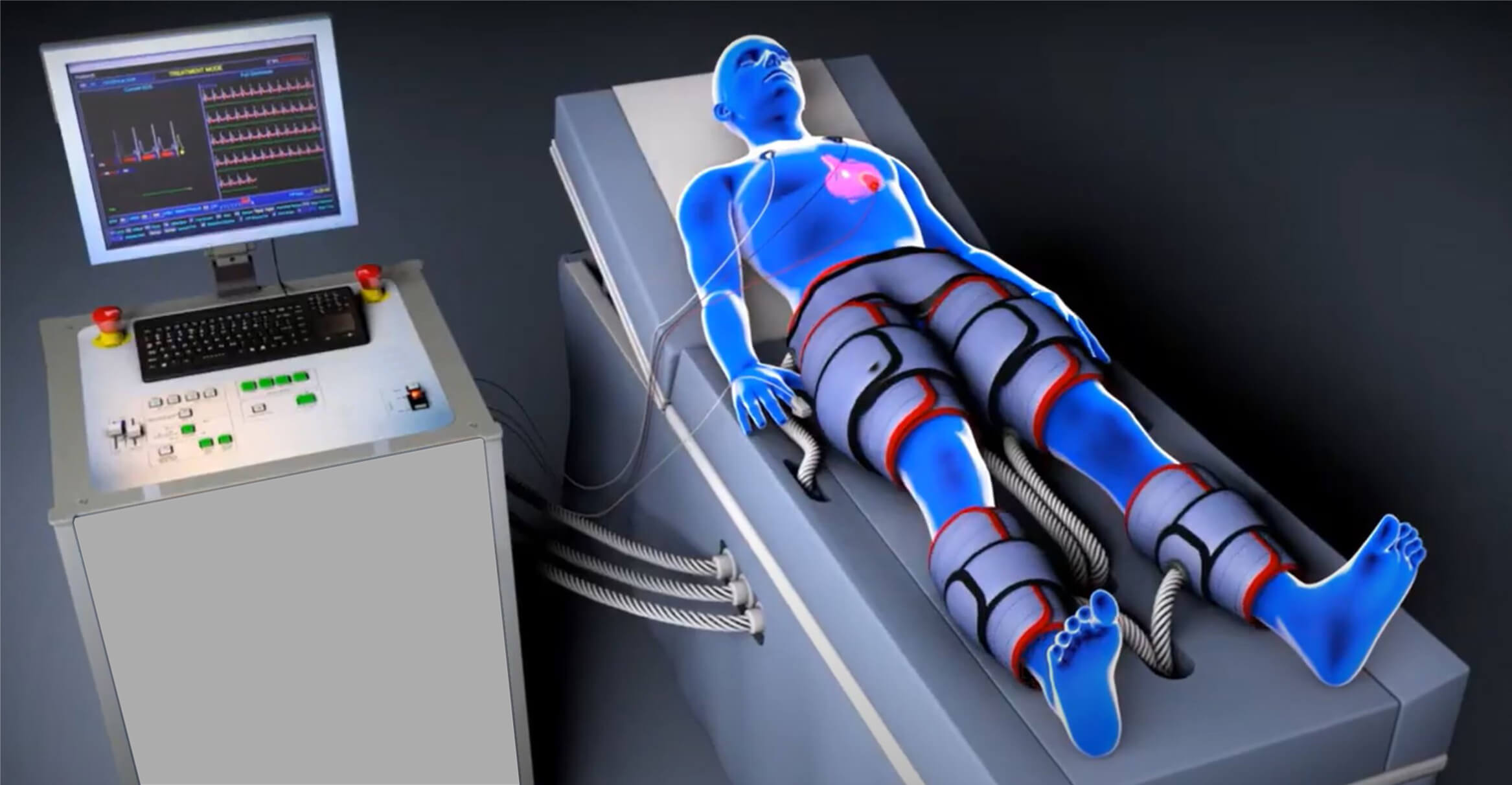When it comes to treating heart diseases, namely coronary artery disease (CAD), two basic therapeutic methods are frequently mentioned: enhanced external counterpulsation (EECP) therapy and bypass surgery. While both procedures are intended to relieve symptoms and enhance heart health, they differ greatly in terms of invasiveness, risk, recovery time, and long-term benefits. In this post, we’ll look at why EECP may be a superior alternative to bypass surgery for many people.
Understanding EECP Therapy
Enhanced External Counterpulsation (EECP) is a non-invasive treatment for people suffering from angina or heart failure. It works by increasing blood flow to the heart, lowering angina symptoms, and improving overall cardiac function. EECP requires the use of cuffs, like blood pressure cuffs, which are put around the patient’s legs. These cuffs inflate and deflate in time with the patient’s heartbeat, helping to push blood toward the heart and enhance the supply of oxygen-rich blood to the heart muscle.
Bypass Surgery: A Traditional Approach
Bypass surgery, commonly known as coronary artery bypass grafting (CABG), is a more intrusive treatment that involves cutting a new path for blood to take around blocked or restricted arteries. This operation is typically suggested for patients with significant coronary artery disease or those who have not responded well to previous treatments. The treatment entails connecting a healthy blood vessel from another section of the body (such as the leg or chest) to the coronary. The artery above and below the occlusion allows blood to bypass the stopped segment.
Benefits of EECP over Bypass Surgery
1. Non-invasiveness of EECP
One of the primary benefits of EECP over bypass surgery is its non-invasive nature. EECP does not involve surgical intervention, making it a safer choice for people who are at high risk of surgery owing to age, other health issues, or personal preferences. Unlike bypass surgery, which requires opening the chest and manipulating the heart, EECP is performed externally, lowering the risk of problems such as infections, blood clots, and other surgical concerns.
2. Reduced risk of complications
Bypass surgery, while beneficial, carries a high risk of complications. According to numerous research, the mortality rate of bypass surgery varies between 1% and 2%, with older patients or those with other health conditions being at a larger risk. Complications may include heart attacks, strokes, wound infections, and long-term cognitive loss. On the other hand, EECP therapy carries a significantly lower or no risk profile.
3. Shorter recovery time
Recovery following bypass surgery can be lengthy and difficult. Patients usually spend a few days in the hospital, followed by weeks or months of recuperation at home. During this time, people may endure discomfort, exhaustion, and limitations in physical activity. In contrast, EECP therapy has no downtime. Patients can continue their routine activities immediately afterward. Each session requires no hospitalization or extended recuperation time. This quicker healing time can be especially advantageous for those who have hectic schedules or commitments that make taking time off impossible.
4. Cost-effectiveness
The cost of medical treatments is an important issue for many patients, particularly in nations where healthcare prices are high. Bypass surgery is a pricey treatment that includes surgery, hospitalization, anesthesia, and aftercare. In contrast, EECP therapy is substantially less expensive, making it a more affordable alternative for many patients. Furthermore, because EECP is non-invasive, it eliminates the need for many of the expensive and demanding postoperative care procedures that come with surgery.
5. Improved Quality of Life
EECP therapy has been proven to considerably improve the quality of life for patients suffering from angina and other cardiac problems. Many patients report a decrease in the frequency and intensity of their symptoms, higher energy, and improved capacity to participate in everyday activities. While bypass surgery can improve one’s quality of life, the advantages are generally delayed and difficult to achieve. Patients who use EECP can see benefits more immediately and with less disruption to their daily lives.
6. Suitable for a Broader Range of Patients
Bypass surgery is not appropriate for everyone. Patients who are elderly, have other chronic health concerns, or are at high risk for surgery may not be suitable candidates for bypass surgery. In contrast, EECP may be a suitable option. A more diverse group of patients, including those who are not surgical candidates, can benefit from this therapy approach. This makes EECP a crucial choice for people who have few therapy alternatives due to their general condition.
7. No need to repeat procedures
One of the disadvantages of bypass surgery is the possibility of having to undergo further surgeries. Over time, the grafts used in bypass surgery may become blocked again, necessitating additional surgeries or treatments. However, EECP therapy has the potential to provide long-term relief without the need for repeated treatments. Some patients may prefer to have regular EECP sessions to preserve their benefits, but these are usually less intrusive and disruptive than new procedures.
Conclusion
EECP therapy offers an appealing option to bypass surgery for many people with coronary artery disease. Its non-invasive nature, lower risk of problems, quicker recovery time, cost-effectiveness, and ability to improve quality of life make it an appealing alternative for a diverse group of patients. While bypass surgery is still a necessary and successful treatment for many, EECP provides a less invasive, safer, and frequently more convenient option for helping people manage their cardiac disease and live better lives.
Patients seeking treatment alternatives should speak with their healthcare professional to decide the best course of action for their specific requirements. In some circumstances, a combination of treatments may be the best option. However, for those who want to avoid surgery or prefer a safer, more convenient treatment alternative, EECP therapy has considerable advantages worth considering.
Also check – 9 Tips for Caring for Your Skin After a Facelift Procedure



